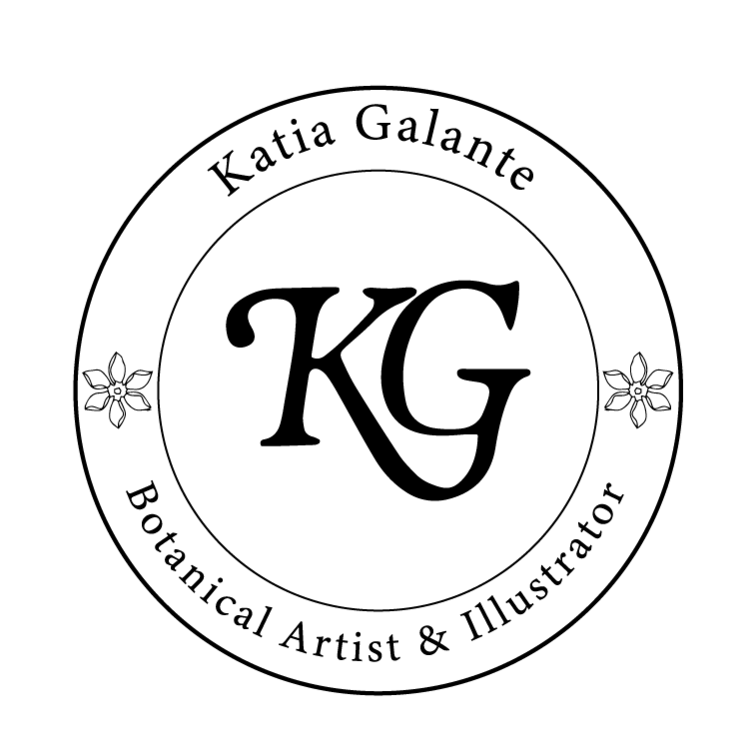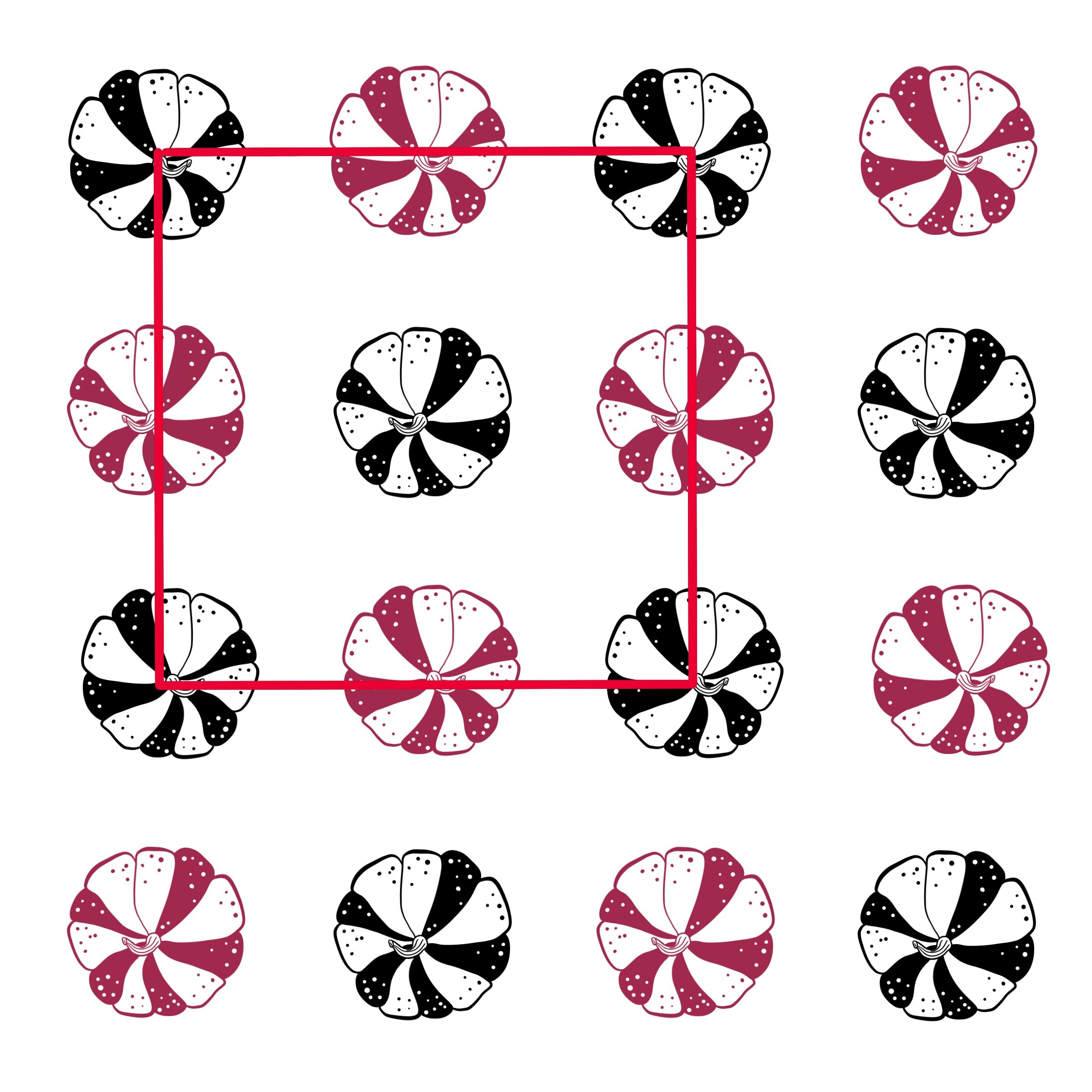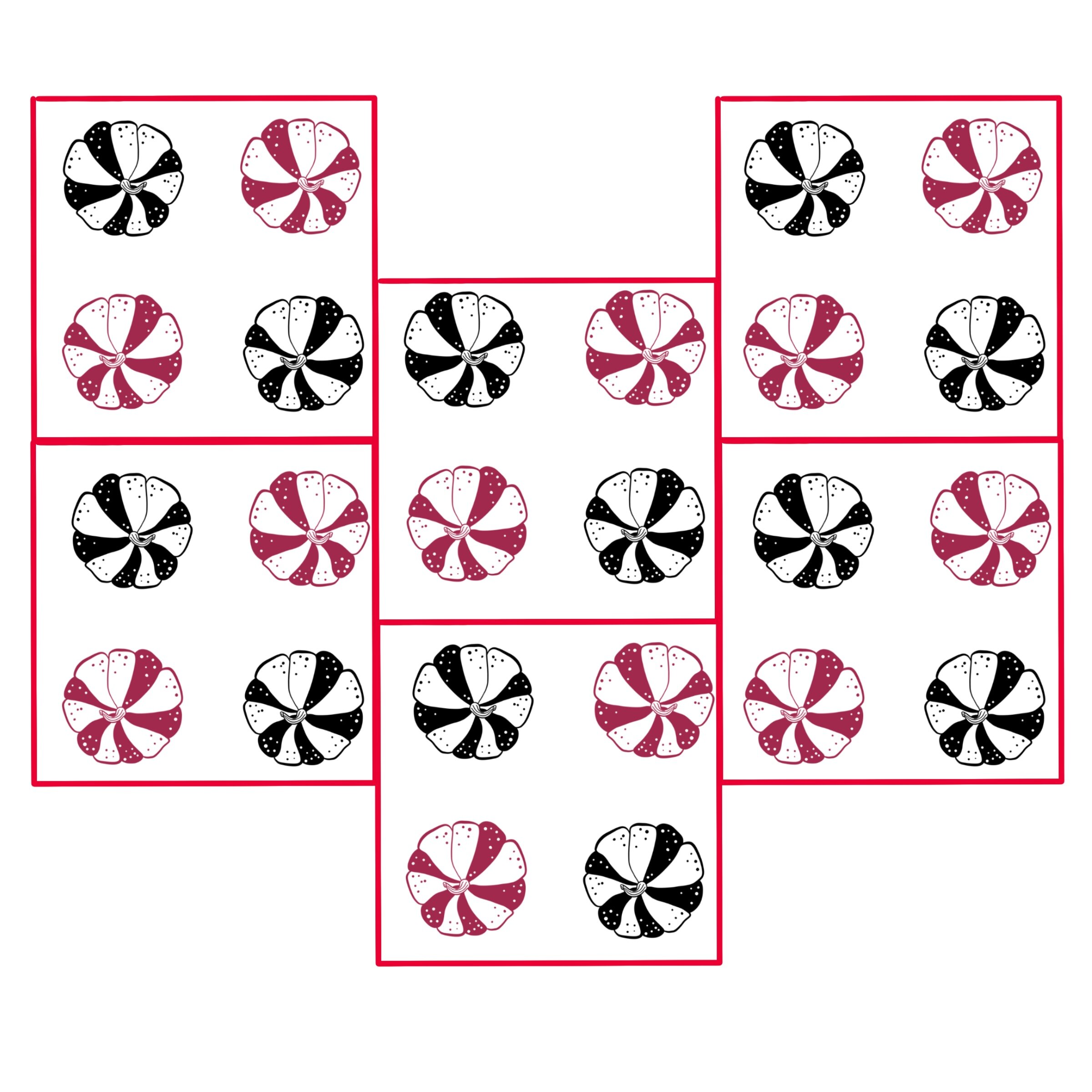When creating a pattern there are many steps involved; from the initial idea and sketch all the way to colouring and adjusting, but the most important step, in my opinion, is the very last step: the creation of the repeat.
For some reason this step is often rushed. Maybe we’re just tired after working on the pattern for a long time, or maybe we’re just impatient (I know I am) to get the pattern done and move to the next exciting project. Whatever it is, we should really keep in mind, when creating the repeat, that this step can make or break the pattern and special care should be used when doing it. It is THAT important.
But with a little patience, we can learn how to make the perfect repeat or, at least, a good one! 😊
Example of a square repeat
A good repeat is one that can’t be immediately individuated or catches your eye. The repeat should be hidden within the motifs and textures allowing the eye to flow around the pattern unhindered.
Although there are various repeat styles, the two most popular ones are the square repeat and the half drop repeat. In the square repeat the motifs are repeated horizontally and vertically and form, as the name suggest, a square. However, just to confuse ourselves, a rectangle shape can also be included in this category; when the horizontal (or the vertical) repeat is longer than the other side the pattern creates a rectangle, but the repeat would still be very identifiable.
Example of a half drop repeat where the motifs drop half of the vertical repeat.
When you create a half drop repeat, the horizontal repeat is staggered so the motifs are shifted half the length of the repeat either up or down the vertical line. This creates an uneven number of pattern repeats across the fabric/wallpaper/paper width.
Although the example on the right is very simple, in general when using half drop repeats the repeat is better concealed and more difficult to spot, especially if there are different elements and textures.
If the repeat is not designed properly, the eye will be drawn to follow the horizontal or vertical lines formed by the motifs and the beauty of the motifs would be lost, no matter how wonderful they are.
If you want to train your eye to spot mistakes like this, you can take a look at patterns you see around you, or take a look at your own work for a self-critique.
Check if you can identify the repeat, can you tell if it’s a half drop? Or a square repeat? Can you actually see the repeat and if so what motif makes that possible?
What is your favorite pattern repeat? Do you like a different type of repeat? Do you know of an unusual repeat type? Let me know your thoughts in the comments!


